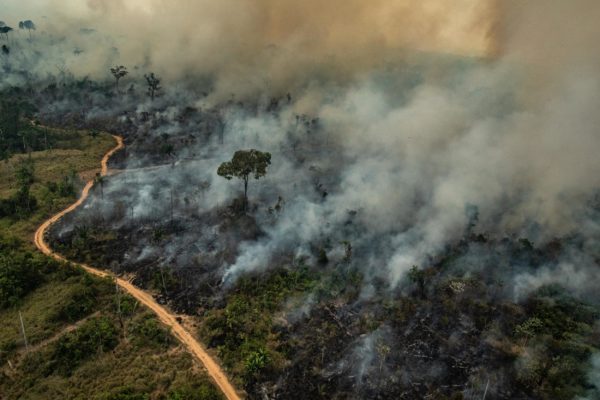Brazilian Amazon deforestation surges to highest level in a decade
Latest data from Brazil's satellite data agency reveals 30% spike on last year

Deforestation of the Brazilian Amazon jumped 30% to its highest level in more than a decade, data released today showed.
The results from Brazil’s National Space Research Institute (INPE) show a sharp uptick in loss of rainforest since Jair Bolsonaro was elected in October 2018 and strengthen claims by environmentalists that his presidency will prove disastrous for the environment.
Bolsonaro has made no secret of his contempt for conservation efforts. Since coming to power has cut funding to environmental protection agencies, including to their fire protection departments, and called for opening up the rainforest and its indigenous territories to mining interest.
Some ranchers and loggers have said they feel inspired and emboldened by Bolsonaro’s ascent to power to seize land and set fires with impunity.
“The staggering numbers announced today sadly are not surprising news,” Claudio Maretti, former president of Brazil’s ICMBio, the agency that looks after Brazil’s conservation units, told Unearthed.
Maretti said that while there were crucial factors encouraging deforestation throughout the Amazon, such as new infrastructure projects, the current administration had actively encouraged illegal activities.
“The declarations that punishments would be reduced, that illegally occupied land would be legitimised, the campaign to discredit deforestation monitoring by INPE, the minimization of forest fires, these are all examples of deliberate efforts to promote the increase of deforestation,” he said.
INPE released preliminary data showing a loss of 9,762 square km from August 2018 to July 2019 – just under half the size of Wales. It is the highest annual rate since 2008, and 29.5% higher than the 7,536 square km lost the previous year.
Bolsonaro has repeatedly claimed that reports of increased deforestation are wrong or lies spread to discredit him by NGOs. In August, after INPE reported a spike of 88% in June’s monthly deforestation rate, he accused the government agency of falsifying data to reflect badly on him. Shortly afterwards the head of INPE, Ricardo Galvão, was dismissed.
Galvão today told reporters that the data confirms the warnings issued in August and that Brazil would fail to meet its National Policy on Climate Change.
“Brazil is committed… to not have deforestation above 3,900 square km by 2020. But this index has been rising for three years and now it has reached almost 10,000 square km,” he said.
After a destructive wave of fires spread through the forest in August and turned Sao Paulo’s afternoon skies dark, triggering an international outcry, Bolsonaro changed course and sent the military to help fight the blazes. But critics point out that no funding for IBAMA and ICMBio has been reinstated, and he has not backed down on plans to introduce legislation that would allow companies to mine in indigenous territories.
Almost 40% of all Amazonian deforestation occurred in the northeastern state of Pará, which is particularly vulnerable to deforestation because it is crossed by a highway. But the small, far northern state of Roraima saw the biggest relative increase: loss of vegetation there was 216% higher than the previous year.
Scientists warn that deforestation is taking the Amazon dangerously close to a “tipping point” beyond which the Amazon will no longer produce enough rain to regenerate itself and will degrade into a dry savannah.

